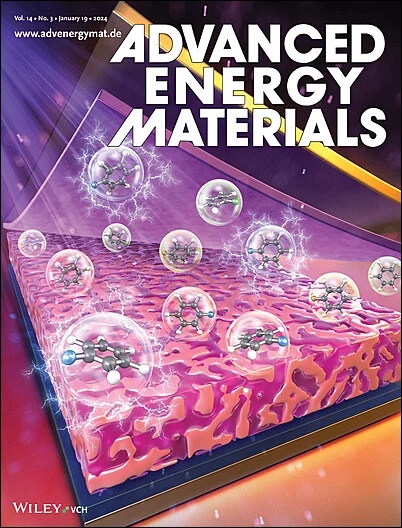CO2‐Bridged Electrochemical Upcycling of Organic Pollutants to High‐Purity Formic Acid via Membrane Electrode Assembly
IF 26
1区 材料科学
Q1 CHEMISTRY, PHYSICAL
引用次数: 0
Abstract
Environmental pollution and energy shortage pose significant challenges to sustainable development. Conventional deep mineralization of organic pollutants not only increases carbon emissions but also causes the waste of carbon resources. Herein, a coupled electrocatalytic system that enables the selective conversion of various organic pollutants into high‐purity formic acid is constructed leveraging self‐supplied CO膜电极组装有机污染物的CO2桥接电化学升级循环制备高纯度甲酸
环境污染和能源短缺是可持续发展面临的重大挑战。常规的有机污染物深部矿化不仅增加了碳排放,而且造成了碳资源的浪费。本研究构建了一个耦合电催化系统,使各种有机污染物能够选择性地转化为高纯度甲酸,利用自供应的二氧化碳还原作为零间隙膜电极组装电解槽内的桥梁。Sb/SnO2‐PbO2阳极有利于原位CO2生成以进行阴极还原,而单原子Cu‐合金Bi阴极通过从Cu到Bi的电子转移优化了关键中间体的吸附强度,从而提高了选择性HCOOH的产生。集成的电解系统在8 h内实现了62.48µmol的甲酸产率和24.6%的碳利用率。通过原位红外光谱、原位拉曼光谱、在线dms(监测反应中间体和产物的演变)和原位X射线吸收精细结构光谱(阐明催化位点的动态化学状态)揭示了潜在的反应机制。这项工作为含复杂成分的废水的有效资源利用提供了一种新的策略,展示了一种可持续的靶向合成液体燃料的途径。
本文章由计算机程序翻译,如有差异,请以英文原文为准。
求助全文
约1分钟内获得全文
求助全文
来源期刊

Advanced Energy Materials
CHEMISTRY, PHYSICAL-ENERGY & FUELS
CiteScore
41.90
自引率
4.00%
发文量
889
审稿时长
1.4 months
期刊介绍:
Established in 2011, Advanced Energy Materials is an international, interdisciplinary, English-language journal that focuses on materials used in energy harvesting, conversion, and storage. It is regarded as a top-quality journal alongside Advanced Materials, Advanced Functional Materials, and Small.
With a 2022 Impact Factor of 27.8, Advanced Energy Materials is considered a prime source for the best energy-related research. The journal covers a wide range of topics in energy-related research, including organic and inorganic photovoltaics, batteries and supercapacitors, fuel cells, hydrogen generation and storage, thermoelectrics, water splitting and photocatalysis, solar fuels and thermosolar power, magnetocalorics, and piezoelectronics.
The readership of Advanced Energy Materials includes materials scientists, chemists, physicists, and engineers in both academia and industry. The journal is indexed in various databases and collections, such as Advanced Technologies & Aerospace Database, FIZ Karlsruhe, INSPEC (IET), Science Citation Index Expanded, Technology Collection, and Web of Science, among others.
 求助内容:
求助内容: 应助结果提醒方式:
应助结果提醒方式:


